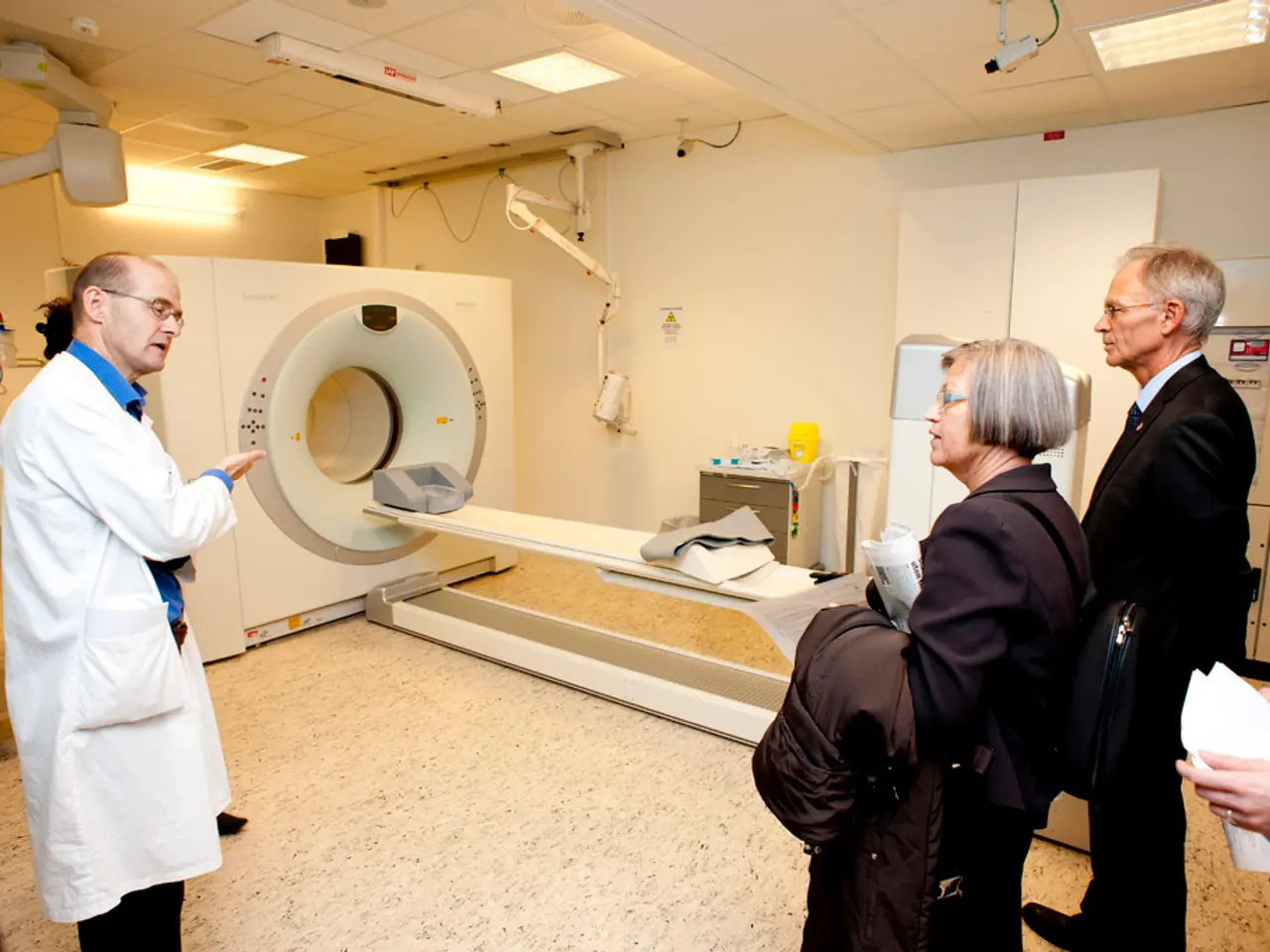Regulatory body for medical devices to initiate Early Access program, aiming to accelerate the integration of innovative medical equipment
The Medicines and Healthcare products Regulatory Agency (MHRA) has announced a groundbreaking initiative - the Early Access service for innovative diagnostic MedTech. This new regulatory pathway is designed to provide time-limited, conditional access to promising medical devices before they receive full regulatory approval [1][2][3][5].
The Early Access service is aimed at devices addressing clearly defined unmet clinical needs within the NHS, with an initial focus on innovative diagnostic devices that support the NHS’s most urgent clinical and financial priorities [1][2][3]. This service enables manufacturers, including small and medium-sized enterprises, to bring safe and effective medical technologies to patients faster by allowing controlled access during the gap between clinical investigation completion and full regulatory approval. It also helps innovators gather real-world evidence on their devices, facilitating improved patient outcomes in Great Britain [3].
The Early Access service builds on learnings from the Unmet Clinical Need Authorisation (UCNA) tool, piloted in the Innovative Devices Access Pathway (IDAP), and is shaped by extensive stakeholder engagement involving industry, clinicians, and NHS leaders [1][2][3].
By accelerating patient access to breakthrough medical devices and supporting innovation, this service is a cornerstone of the MHRA’s contribution to wider UK government initiatives, such as the Life Sciences Sector Plan and the 10-Year Health Plan. It is intended to strengthen the UK’s position as a global leader in medical device innovation through risk-proportionate regulation, enhanced post-market surveillance, and international collaboration, fostering growth across the UK MedTech sector [1][2][4][5].
CE marked devices will continue to be recognized indefinitely. However, the Early Access service is designed to receive global recognition, positioning the UK as a hub for medical device innovation on a global scale [3].
For comments or questions about the AI used in this article, please contact Chris Whitehouse, a political consultant and expert on medical technology policy and regulation, at [email protected]. This article was prepared using AI.
[1] MHRA. (2022). Early Access service for innovative diagnostic devices. Retrieved from https://www.gov.uk/government/publications/early-access-service-for-innovative-diagnostic-devices/early-access-service-for-innovative-diagnostic-devices
[2] MHRA. (2022). Innovative Devices Access Pathway. Retrieved from https://www.gov.uk/government/publications/innovative-devices-access-pathway/innovative-devices-access-pathway
[3] MHRA. (2022). Unmet Clinical Need Authorisation. Retrieved from https://www.gov.uk/government/publications/unmet-clinical-need-authorisation/unmet-clinical-need-authorisation
[4] UK Government. (2021). Life Sciences Sector Deal. Retrieved from https://www.gov.uk/government/publications/life-sciences-sector-deal/life-sciences-sector-deal
[5] UK Government. (2021). 10-Year Health Plan. Retrieved from https://www.gov.uk/government/publications/10-year-plan-for-the-nhs/10-year-plan-for-the-nhs
Read also:
- Fifth-generation family member, Anandamayi Bajaj, makes history by becoming the first female leader to join the Bajaj Group, following in the footsteps of her lineage's patriarch, Shri Jamnalal Bajaj.
- Proposal sought for a directive on shielding workers from potential ionizing radiation hazards, as per Commission's request.
- Eastwood's 90/10 principle for enduring success span
- Childhood Bone Cancer: Crucial Facts to Understand




